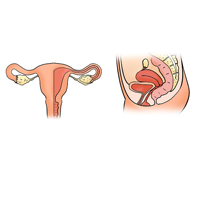Medico-social factors associated with late presentation in women with cancer of the cervix in Northern Nigeria

Accepted: 28 January 2020
All claims expressed in this article are solely those of the authors and do not necessarily represent those of their affiliated organizations, or those of the publisher, the editors and the reviewers. Any product that may be evaluated in this article or claim that may be made by its manufacturer is not guaranteed or endorsed by the publisher.
Authors
Cancer of the cervix is the commonest gynecological cancer and the leading cause of cancer mortality among women in Africa.Certain social behaviors have been associated with an increased risk of high-risk Human Papillomavirus (HPV) infection, which is responsible for virtually all cases of Invasive Cervical Cancer (ICC). Retrospective review of the medico-social and histo-pathologic patterns of cases of cancer of the cervix at the Gynecology Oncology Unit, Aminu Kano Teaching Hospital, Kano between January 2006 to December 2010 was conducted. The socio-demographic, medical and histological data of each patient were extracted and analyzed. A total of 91 cases of cancer of the cervix were identified. The mean age of the respondents was 48 years (SD±10.2years), mean parity was 7 (SD±3.2) and mean age at first marriage was 15.2 years (SD±1.9years). Most of the patients had being married more than once in their lifetime. Majority of the women were unemployed and over half had no formal education. The commonest presenting complaint and complication respectively was vaginal bleeding (72.5%) and anaemia (45.1%). Most of the patient had advanced stages of the disease (86.8%). Only 18 out of the 91 had undergone HIV testing, with 28% testing positive to the virus. The commonest histologic type of cervical cancer (85.7%) was Squamous Cell Carcinoma (SCC). There were statistically significant associations between advanced disease and age, parity and number of lifetime marriages. Patients with cancer of the cervix seen at our institution are within the reproductive age group. They are mostly grandmultiparous, have no formal education and have more than one life time marriages. They usually present with late stage disease and of SCC histologically.
How to Cite
PAGEPress has chosen to apply the Creative Commons Attribution NonCommercial 4.0 International License (CC BY-NC 4.0) to all manuscripts to be published.

 https://doi.org/10.4081/pjm.2021.59
https://doi.org/10.4081/pjm.2021.59



